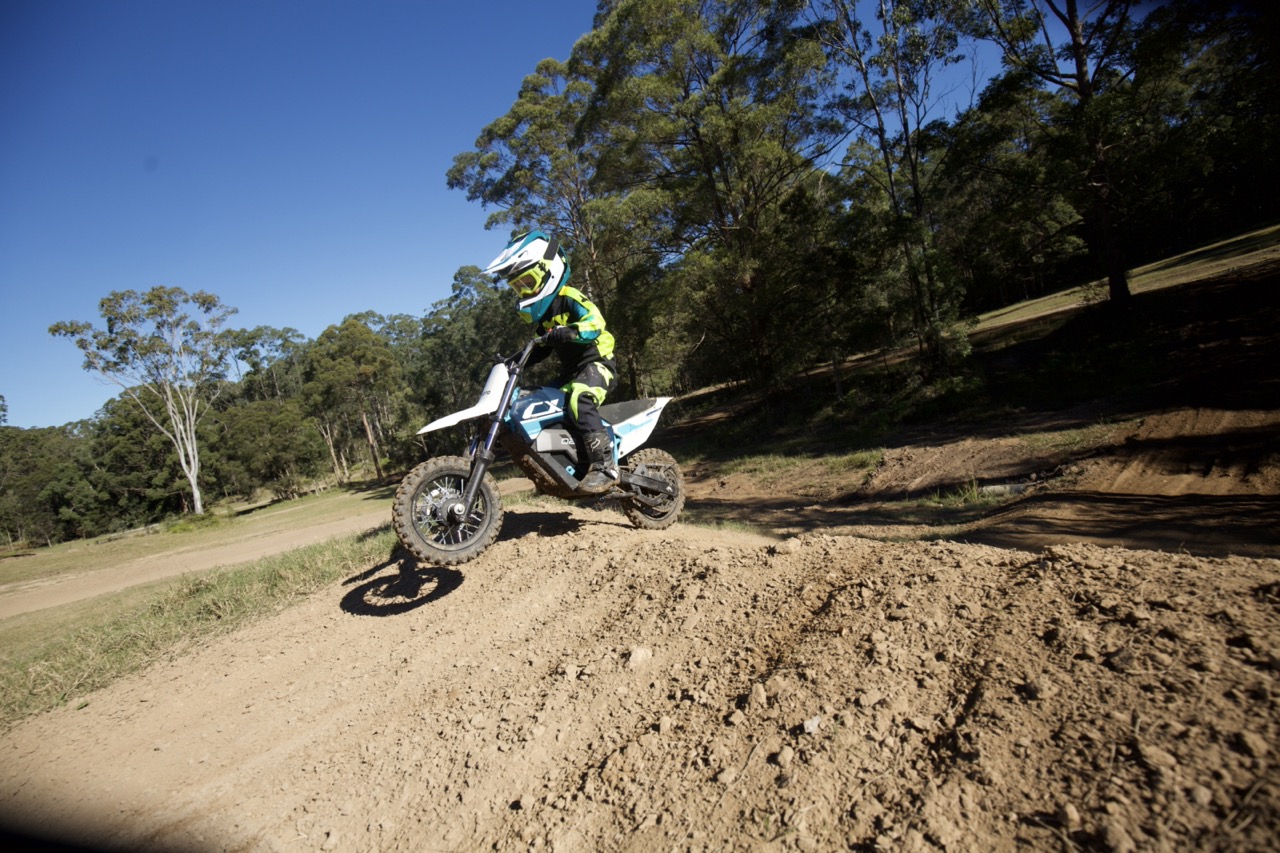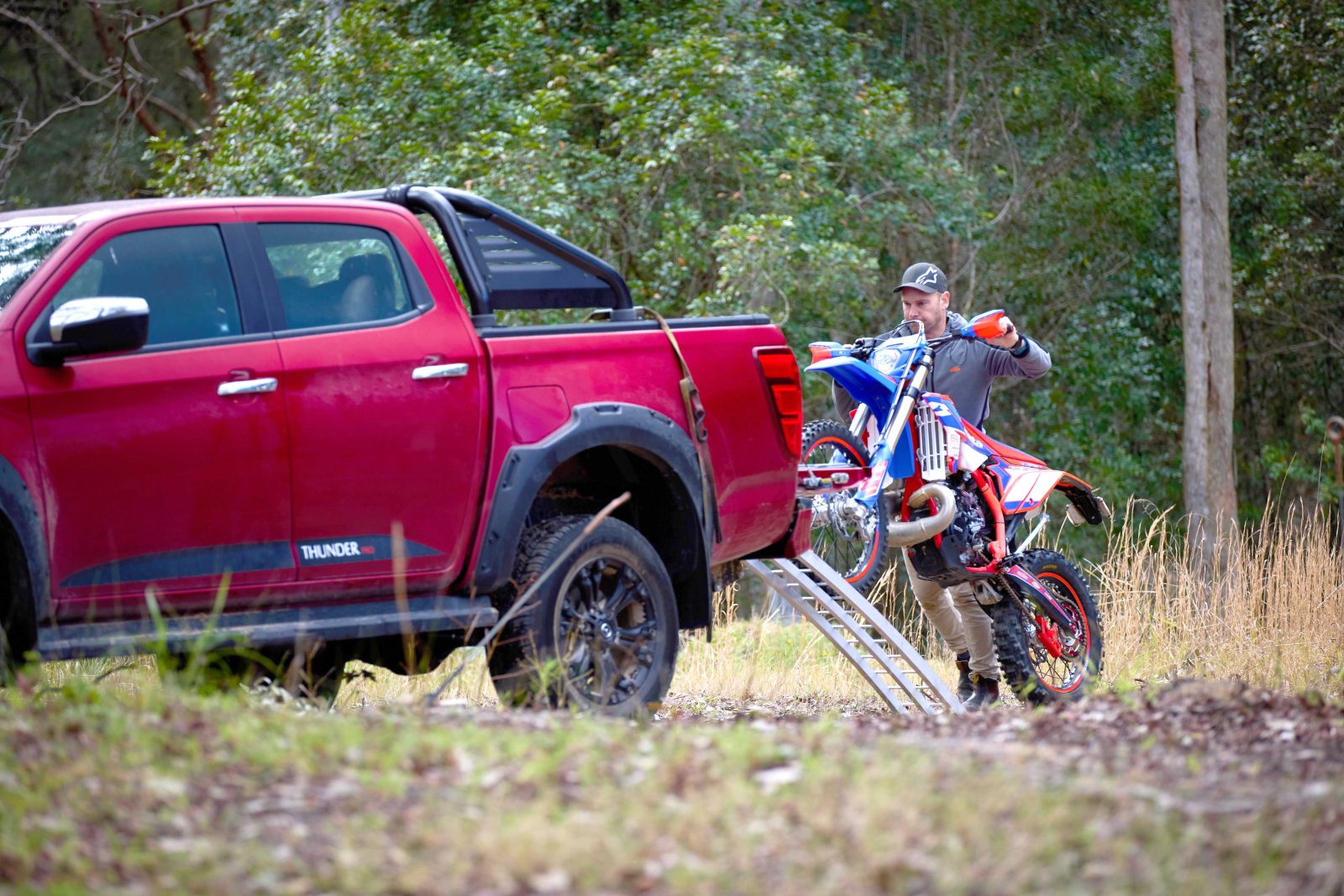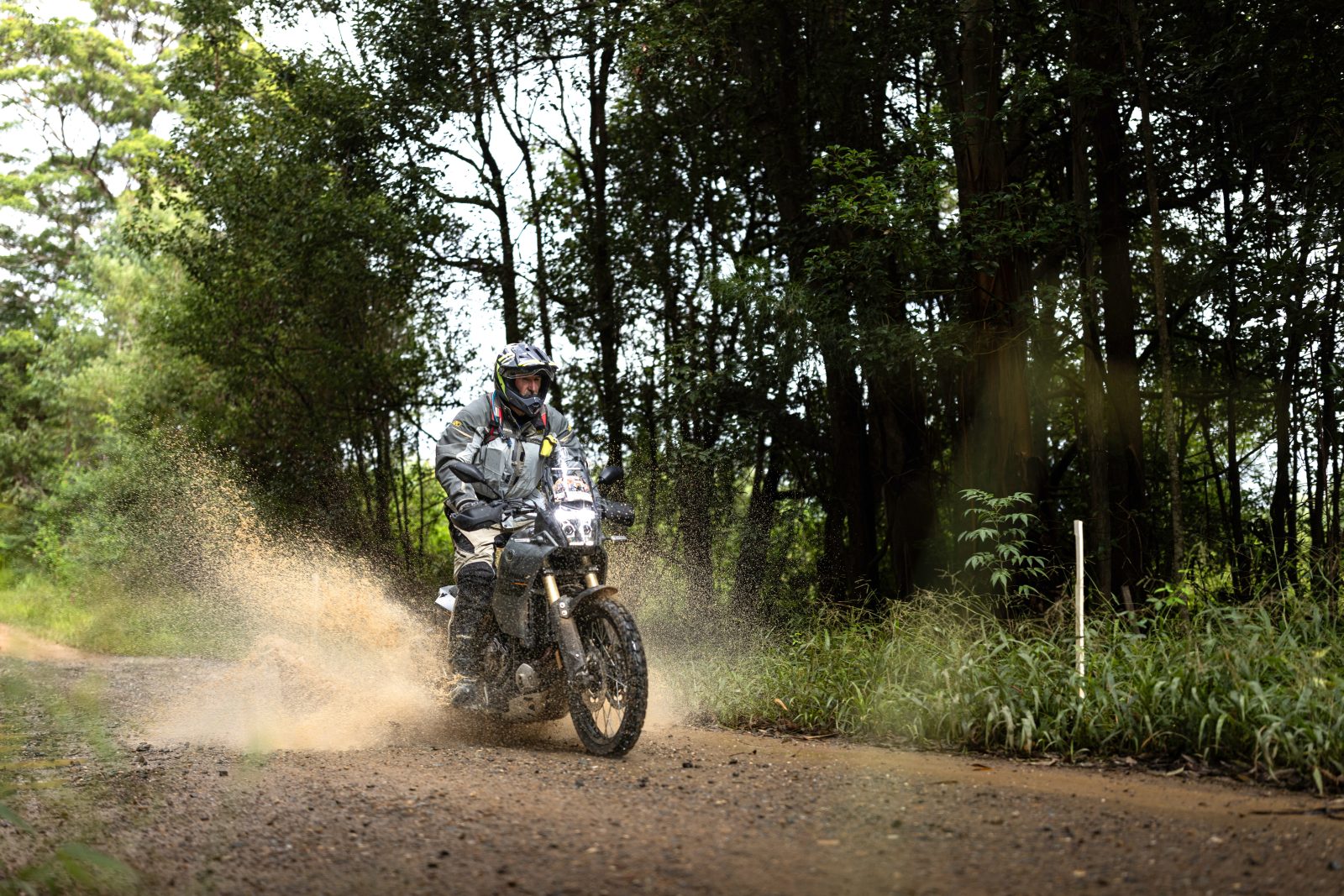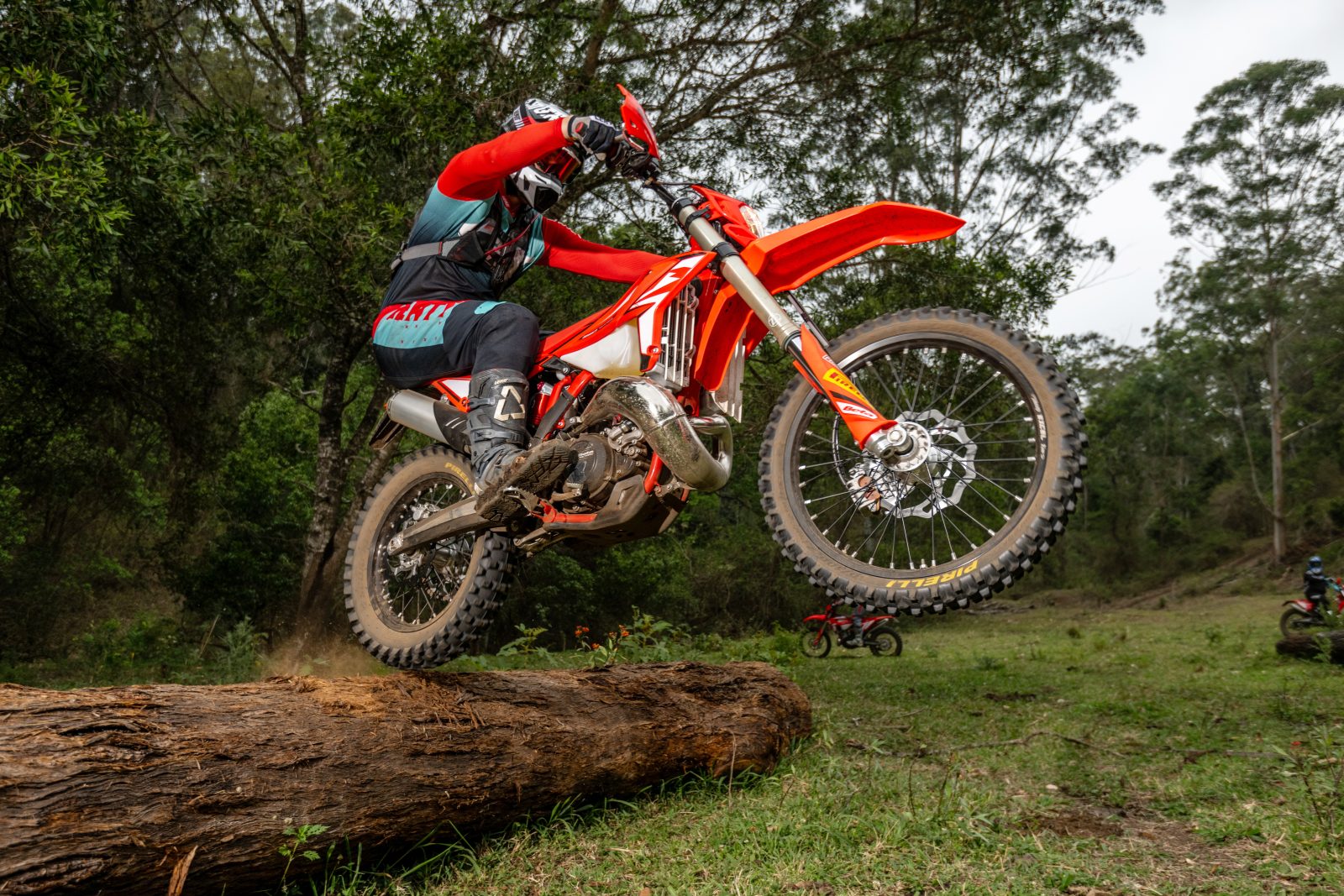Last month I was invited to China by Segway Powersports who make ATVs and UTVs. Normally I’d pass up on a junket like this as it’s not two wheels but considering the growing interest from Chinese companies in dirtbikes and in the agricultural sector (a large portion of our readership) I thought I’d go along and try and get a gauge as to what Chinese off-road vehicle companies like Segway are doing in this space.
The technological landscape in China has evolved drastically over the past few decades. Once considered a manufacturing hub for inexpensive and often inferior products, China has rapidly transformed into a global technology leader. This transformation is particularly evident in the rural and agricultural sectors. A prime example of this technological prowess is Segway Powersports, a subsidiary of the renowned Segway brand, known for its range of ATVs and UTVs. These vehicles showcase China’s remarkable journey from tech follower to tech leader.

Where did it start?
China’s technological journey began in earnest in the late 20th century. During the 1980s and 1990s, China was primarily seen as a manufacturer of low-cost electronics and consumer goods. However, the turn of the millennium marked a significant shift as the Chinese government invested heavily in education, research, and development. This period saw the emergence of tech giants like Huawei, Lenovo, and Xiaomi.
The 2010s witnessed an explosion of innovation, with China becoming a leader in fields such as artificial intelligence, 5G technology, and electric vehicles. Government policies, such as the “Made in China 2025” initiative, further fuelled this growth, encouraging domestic companies to focus on high-tech manufacturing.

The Evolution of Segway
Segway, a brand synonymous with personal mobility devices, was founded in the United States in 1999. Known for its self-balancing scooters, Segway quickly became a household name. In 2015, Ninebot, a Chinese robotics company, acquired Segway, marking a significant turning point for the brand. This acquisition enabled Segway to leverage Ninebot’s advanced technology and manufacturing capabilities, paving the way for its expansion into new markets, including powersports.

Rapid Learning and Improvement
One of the most remarkable aspects of China’s technological ascent is the speed at which it has occurred. Chinese companies have demonstrated an ability to learn and innovate, often outpacing their Western counterparts. This rapid progression can be attributed to several factors:
- Government Support: Substantial government subsidies (the good ol’ CCP) and incentives have enabled Chinese companies to invest in research and development.
- Talent Pool: China boasts a vast workforce, with millions of engineers and scientists graduating each year.
- Market Size: The sheer size of the domestic market allows for large-scale testing and iteration of new technologies.
- Collaboration and Competition: Intense competition among domestic firms and collaboration with global tech leaders has accelerated innovation.

Where does Segway fit in?
Segway now has a comprehensive range of ATVs and UTVs designed to meet the needs of modern agriculture.
Two years ago, Segway’s Aussie distributor, Urban Moto Imports, decided to equip their ATVs with the Roll Over Protection system (ROP) that was being enforced by our federal government. With all the Japanese and American ATVs refusing to sell their ATVs with a ROP fitted, this left Segway as one of the only manufacturers in this space in Australia.
Segway sell UTVs for agriculture and recreation too. These vehicles are also being tested with a hybrid engine system but more on that later. While I was in China I got a day to cut some laps on their entire range of ATVs and UTVs.

Snarler Range
AT 5 S – EPS
The ATV 5 S – EPS runs a 499cc, four-stroke, single-cylinder, DOHC engine, producing 39hp. Segway claim it can go from 0-60 km/h in just 4.6 seconds.
It runs The Bosch electronic fuel injection, 2WD, 4WD, and 4WD lock options. It has CVT transmission and smart electronic power steering (EPS) with three modes—Standard, Comfort, and Sport which tailors the steering response.
The ATV 5 S boasts a chromium-molybdenum steel frame and dual A-arm suspension both front and rear, with travel of 18cm and 20cm respectively. The 25-inch tyres are mounted on 12-inch standard steel wheels.
It has four-wheel hydraulic disc brakes, can tow a monstrous 612kg if braked, with a payload capacity of 185kg and a 19-litre fuel tank. I found it had excellent power, perfect for Aussie farms and lightweight power steering. It felt stable off-camber and was easy to move around on. It impressed me most in the ATV range.
AT 6 S – EPS
The AT 6 S is powered by a 570cc, four-stroke, single-cylinder, DOHC engine, making 44hp. It has EFI and the transmission is an automatic CVT.
It has 2WD and 4WD with differential lock options and the same EPS. The frame and suspension are also the same as the AT 5
The AT6 had a sportier feel to it which I didn’t like. I didn’t like the seat as it doesn’t come all the way down the side making it uncomfortable to counter-balance off-camber slopes. The suspension is too short in the travel for an ATV this serious, and it felt a little harsh. The power is excellent and all you need for Aussie farms. The left hand brake lever also only operated as a park brake which confused me while riding.
AT 10
The AT 10 is an all-new ATV for Segway and it is an absolute monster. It has a 1000cc, four-stroke, twin-cylinder, DOHC engine that pumps out a whopping 107hp. It has a familiar drive system with 2WD, 4WD and locking options.
The AT 10 is equipped with an engine braking system (EBS) too. The suspension system features dual A-arms with 20 cm of travel in the front and 23.5 cm in the rear. It gets 14-inch aluminium wheels.
The AT 10 includes the Smart Commanding System (DTU+SDC), a digital screen and compatibility with the Smart-Moving App. It’s big at 235cm in length, 128cm in width, and 143cm in height, with a ground clearance of 27cm and a seat height of 91cm. The AT 10 has a dry weight of 445 kg and a fuel capacity of 23 litres.
The overall payload capacity is 270 kg but they could not verify the towing capacity. It gets the Smart Electronic Power Steering (EPS) system and similar chromium-molybdenum steel frame.
After testing the AT10, I can confirm the motor is a monster but the throttle had an inch of freeplay before taking off making it hard to be accurate with throttle application. The brakes were a little on the soft side for a motor so powerful. The suspension was plush in the initial part but bottomed out too quickly. The seats are comfortable and really lock you in place. The power steering and stability are excellent.

Fuglemen Range
UT6
The UT6 is Segway’s all-new ag UTV and it is excellent. While there were some things that need improvement, it is the perfect capacity for Aussie farms.
It’s available in two models: Standard and Premium, both powered by a 570cc, four-stroke, single-cylinder DOHC engine producing 44hp. It gets an automatic CVT transmission and front and rear diff locks.
The UT6 is smaller than the UT10 at 305cm in length but the cargo bed is physically bigger! It can cart 272kg in the tub with a payload capacity of 682 kg. The suspension and brakes are similar across both models.
It gets 14-inch wheels and four-wheel hydraulic disc brakes. It can hold 43 litres of fuel, and even has a 10.4-inch infotainment touchscreen on the Premium model. Both models support the Smart Moving App and come with a 4,500 lb winch. The UT6 can accommodate up to three passengers.
For a 600, the UT6 had excellent power. It had plenty of torque and top-end speed and it was linear and easy to control. The suspension was a little lacking and it rattled a little more than the UT10. Like the UT10 I’d like to see low range slower and, as this was a pre-production model we were testing, the tailgate got stuck and the handle felt flimsy. But, the cargo capacity looked huge with high sides for carting plenty of gear.

UT10 – X
The UT10 runs a 1000cc, four-stroke, twin-cylinder, DOHC petrol engine, producing 105hp. It gets a chromium-molybdenum steel frame and dual A-Arm suspension with 27cm of rear travel and 28cm of front travel.
It offers on-demand 2WD/4WD drive system and diff locks. The AT10 is also equipped with the smart electronic power steering system.
It gets four-wheel hydraulic disc brakes, 14-inch tyres with steel or aluminium wheel options. It can tow 680kg, and has a bed box capacity of 450kg.
Fuel capacity is 45 litres, and the vehicle can comfortably seat three passengers. I hopped in the UT10 after getting out of the UT6 and boy is the power really strong! It has to be the most powerful 1000cc agricultural UTV I’ve driven but it is very abrupt. The power can be hard to control at times as it’s quite sensitive. The difference between low range and high range is not enough. Low should be slower. The suspension was firm and not long or soft enough. The seats are comfortable, the steering wheel is comfortable but there’s not a huge amount of tray space either.

Technological Advancements
Segway’s ATVs and UTVs are not cheap Chinese junk made to sell on eBay; they incorporate several technological innovations that set them apart.
Many of Segway’s vehicles are equipped with intelligent management systems that allow for real-time monitoring and control. These systems can track vehicle performance, optimize fuel efficiency, and provide diagnostic information, reducing downtime and maintenance costs.
Segway Powersports offers hybrid models in their UTVs. These eco-friendly options would be particularly beneficial in rural areas, where fuel sources can be expensive and vehicles are designed to run all day but unfortunately we only tested the hybrid in the Super Villain, their sport UTV. It would be great to see the technology used in their agricultural machines. This could be help large scale mining and farming in Australia get their emissions under the targets set by our government.
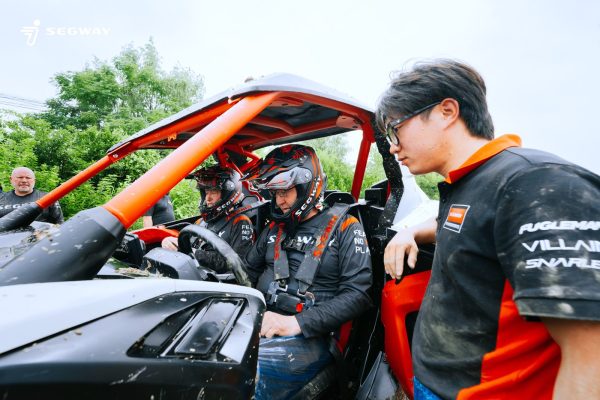
The Chinese are coming
The feeling I got from the launch was that Segway were not going to rest until they have complete tech superiority. They see tech innovation as a means to take over markets.
The affordability and reliability of Chinese-made ATVs and UTVs make them attractive options for farmers or recreational users on a budget.
China’s journey from a manufacturing hub to a global technology leader is nothing short of extraordinary. The rapid learning and improvement exhibited by Chinese companies like Segway was obvious to me. Segway’s vehicles are equipped with technology not seen in other brands. As this technology continues to evolve, they hold the promise of a more productive and sustainable future.
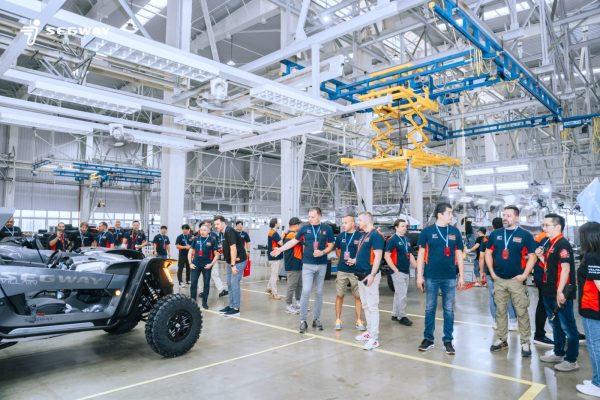
Future Innovations
Segway Powersports is not working in isolation; it is part of a broader ecosystem of Chinese technological innovation.
- Internet of Things (IoT): The smart management systems in Segway’s vehicles are part of a larger IoT framework, allowing for seamless connectivity and data exchange.
- Artificial Intelligence (AI): AI technologies are being utilized to enhance the performance and efficiency of Segway’s vehicles. Machine learning algorithms analyse data from the vehicles to optimize routes, predict potential issues, and suggest maintenance schedules.
- 5G Connectivity: The advent of 5G technology is set to revolutionize the capabilities of Segway’s vehicles. With faster and more reliable connectivity, these vehicles can communicate more effectively with other devices and systems, facilitating remote control and management, as well as enabling new functionalities such as autonomous operation.
- Renewable Energy Integration: Segway is exploring the integration of renewable energy sources into their vehicles. Solar panels and other renewable energy solutions are being developed to power the electric and hybrid models.
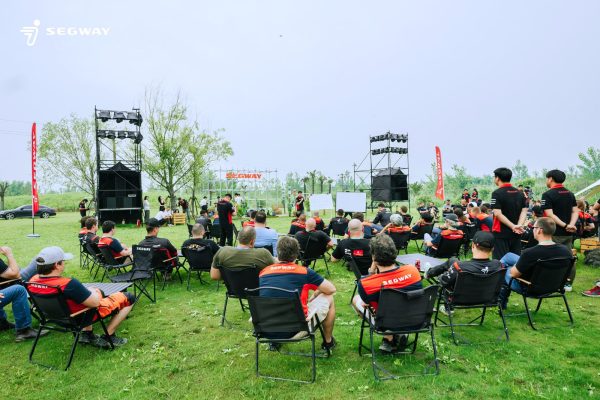
But it’s made in China!
No matter how hard Segway and other Chinese motorcycle, ATV and UTV manufacturers try, many Australians will still balk at anything made in China (despite probably owning a device in their pocket made in China).
Here are the things I think Chinese brands have to rectify before markets like Australia will fully embrace them:
- Quality Perception: While Chinese technology has significantly improved, there remains a perception issue regarding the quality of Chinese-made products. After a tour of the Segway manufacturing facility, it seems to be improving.
- Regulatory Hurdles: The global expansion of Chinese technology companies often encounters regulatory barriers. Adhering to different countries’ regulations and standards can be challenging and requires significant resources and expertise, take the ROP system for example.
- Intellectual Property (IP) Concerns: Protecting intellectual property and ensuring fair competition remains a critical issue. Chinese companies must continue to build trust and demonstrate respect for IP rights to succeed in international markets.

Words | Mitch Lees
Photos | Segway Powersports


